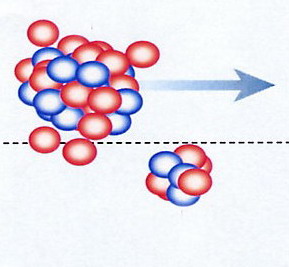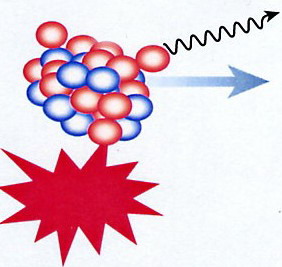
Reaction Mechanisms for Rare Isotope Beams
Michigan State University, March 9-12, 2005

 |
Second
Argonne/MSU/JINA/INT
RIA Workshop Reaction Mechanisms for Rare Isotope Beams Michigan State University, March 9-12, 2005 |
 |
 |
 |
 |
| Wednesday |
9:00 |
Daniel Baye |
Review on semiclassical models
for breakup |
| March 9 | 9:45 |
Pierre Capel | Role of a resonnance in the nuclear and Coulomb dissociation of 11Be |
| morning |
10:30 |
break |
|
| (Nunes) |
11:00 |
Bao-An Li | Transport model for nuclear reactions induced by radioactive beams |
| 11:45 |
lunch |
||
| Wednesday | 2:00 |
Petr Navratil |
No-core shell model and reactions |
| March 9 | 2:45 |
Jeff Tostevin |
Exploring the driplines with
Eikonal models |
| afternoon | 3:30 |
break |
|
| (Hansen) | 3:45 |
Akram Mukhamedzhanov |
Transfer reactions: SF versus ANC |
| 4:30 |
Discussion |
Absolute spectroscopic factors
extracted from reactions (Brown, Tsang, Barbieri) |
|
| Thursday |
9:00 |
Gerhard Baur |
Direct reactions with exotic
nuclei |
| March 10 | 9:45 |
Massimo di Toro |
On the splitting of nucleon
effective masses at high isospin density: reaction observables |
| morning |
10:30 |
break |
|
| (Esbensen) |
11:00 |
Akira Ono | Isoscaling and symmetry energy in dynamical fragment formation |
| 11:45 |
Jutta Escher | Surragate methods for reations | |
| 12:30 |
lunch |
||
| Thursday | 2:00 |
Gentaro Watanabe |
Recent progress on
understanding pasta phases in dense stars |
| March 10 | 2:45 |
Denis Lacroix |
Randomness under constraints in
cluster formation during nuclear reactions |
| afternoon | 3:30 |
break |
|
| (Duguet) | 3:45 |
Maria Colonna |
Fragmentation mechanisms in
charge asymmetric systems |
| 4:30 |
Discussion |
Fragment formation in aymmetric
systems (Danielewicz, Lynch) |
|
| Friday |
9:00 |
Ron Johnson |
Review on adiabatic models |
| March
11 |
9:45 |
Mahir Hussein | Breakup threshold anomaly |
| morning |
10:30 |
break |
|
| (Thoennessen) |
11:00 |
Joachim Gomez-Camacho | Is the optical model valid for the scattering of exotic nuclei? |
| 11:45 |
lunch |
||
| Friday | 2:00 |
Ian Thomson |
Reaction models to probe
continuum structure |
| March 11 | 2:45 |
Aksel Jensen |
Three-body decay of many-body
resonances |
| afternoon | 3:30 |
break |
|
| (Zegers) | 3:45 |
Masayasu Kamimura |
Continuum-discretized
coupled-channels method for four-body breakup reactions |
| 4:30 |
Discussion |
Fusion with RIB (Hussein,
Camacho, Thompson) |
|
| 6:00 |
reception and banquet |
Red Cedar room at the Kellogg
Center |
|
| Saturday |
9:00 |
Carlos Bertulani | Relativistic approach to nuclear reactions with unstable nuclei |
| March
12 |
9:45 |
Francesca Sammarruca | Effective interactions in neutron-rich matter |
| (Brown) |
10:30 |
break |
|
| 11:00 |
Discussion | (Nollett, Wiringa) | |
The descriptions that have commonly been used to analyze reactions between stable nuclei are often unrealistic for reactions of weakly bound, unstable nuclei. Some progress has been made in reformulating reaction theories to incorporate the principal features of the reaction mechanisms and apply them to a variety of new phenomena. This work is typically done in terms of simplified few-body models, so the great open problem for the future remains: how to implement the full many-body dynamics. A particular challenge is to perform reaction calculations that exploit the full complexity of the ab-initio structure models, an effort that has grown rapidly in recent years.
The
workshop covered several types of reactions that are of
interest for different reasons. For example, radiative capture,
breakup and transfer reactions can provide single-particle
spectroscopic information, while fusion reactions at low energy and
more violent central collisions at high energy can provide information
about nuclear properties that are crucial to understanding the
conditions
inside neutron stars.
Organizing
committee:
Alex Brown, Pawel Danielewicz, Henning Esbensen, Ken Nollett and Filomena Nunes